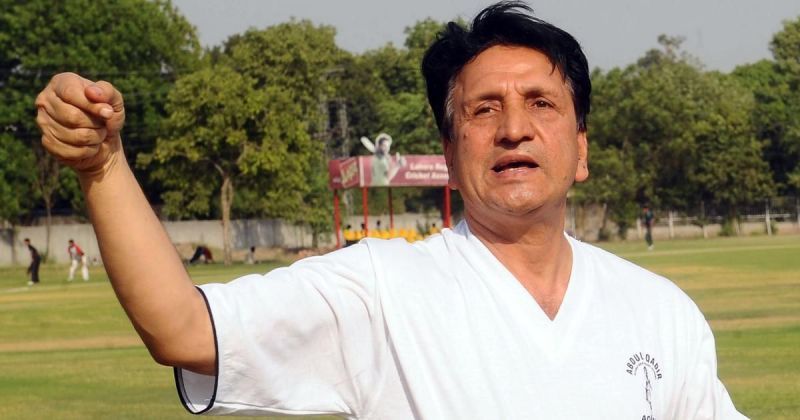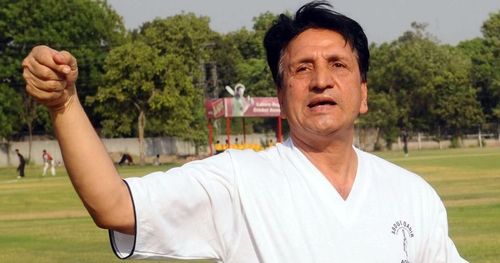
The resurrection of the lost art of wrist spin

Kings XI Punjab had their most successful IPL in Season 7, where they made their way into the finals of the tournament. It was one of the rare seasons when everything went right for the Mohali-based franchise and under the astute leadership of the wily George Bailey, they looked all set to challenge Kolkata Knight Riders (KKR) for their first IPL title. However, Bailey made a quirky decision, while selecting the playing 11 for the finals. Bailey chose a young rookie wrist-spinner- Karanveer Singh over the battle-hardened veteran finger spinner Murali Kartik. The intention was to pick up more wickets against the formidable KKR batting line-up, even at the cost of conceding a few more runs. Karanveer lived up to the lofty expectations of his captain in the match as he picked up vital wickets of Gautam Gambhir, Manish Pandey, Yusuf Pathan, and Ryan ten Doeschate to cripple the KKR batting order. Though KKR managed to win the final, Bailey's plan to outwit the opposition succeeded to the hilt.
Like Bailey in the IPL final, most captains have historically used wrist-spinners as a potent attacking option. However, the wicket-taking ability of wrist spinners comes with its own set of cons. Wrist spinners are generally less accurate in terms of line & length as compared to their finger-spinning counterparts. As a result of that, while you can expect your lead wrist spinner to take match-winning wickets, you should also be prepared to back them as a captain, if they get a fair share of hammering from the batsman.
Also see – PSL schedule
The Potential Extinction of Wrist Spin
ICC Cricket World Cup 2003 featured only 4 wrist spinners - Anil Kumble (India), Shahid Afridi (Pakistan), Collins Obuya (Kenya) and Brad Hogg (Australia). Situations showed no signs of improvement in the 2007 (3 wrist spinners) & 2011 (2 wrist spinners) editions of the tournament as well. The signs were clear- captains were preferring the control and accuracy of finger spin over the gamble of wrist spin. Teams wanted to strangulate opposition batsmen with spin bowling in the middle overs and finger spin was ideally suited for the job. In fact, in the first decade of the 21st century, teams like Sri Lanka formed their primary game plan around spin strangulation. For years, the winning template of Sri Lanka comprised of the opening burst from Chaminda Vaas, followed by the spin asphyxiation by Muttiah Muralitharan, Upul Chandana, Kumara Dharmasena, and Russell Arnold.
The Change in ODI Cricket
Something happened in Hobart in 2013, that changed ODI cricket forever. Virat Kohli led India to one of the most dramatic run chases, the game has ever witnessed. To stay alive in the competition, India needed to chase down 320 within 40 overs. Powered by a whirlwind 133* off 86 balls from Virat, India aced the chase with more than 3 overs to go. That match showed world cricket, that an ODI can be regarded as 2 separate T20 matches, by the batting team. With this change in viewpoint, suddenly scores of 350 and above seemed achievable in 50 over cricket.
The increase in the average score of ODIs meant that teams needed to utilise their middle overs more judiciously. Previously, batsmen were content picking 4 or 5 singles per over in overs 15-40, playing low-risk shots. However, the necessity to pursue higher targets and the latest field restriction rule in ODIs (5 fielders inside the 30-yard circle in middle overs) began prompting the batsmen to play an attacking brand of cricket, even in the middle overs. In a matter of few years since 2013, batsmanship in ODI cricket underwent a sea of changes and the tried and tested ploy of choking oppositions with finger spin started showing its demerits.
Wrist Spin - Version 2.0
With the advent of unorthodox innovative cricket shots in ODI cricket, the finger spinners could no longer perform their designated job of choking oppositions in middle overs. Batsmen started attacking the spinners in middle overs with greater intent. Hence, teams began to understand that the only possible way to restrict oppositions to sub-par scores was to take regular wickets and wrist spinners were the ideal bait to do the job. Thus almost after a decade of hibernation, wrist spin returned to international cricket, with renewed vigour and a hint of modification.

Most of the new generation wrist spinners, who are responsible for the resurrection of the art in the present decade, are quite different from their predecessors. Rashid Khan, Imran Tahir, Samuel Badree, Yuzvendra Chahal, Kuldeep Yadav, Shadab Khan, Ish Sodhi or, Mujeeb ur Rahman bring an element of control & accuracy to their bowling - a weapon that had traditionally been missing from the quiver of traditional wrist spinners in the past. Better accuracy along with higher wicket-taking ability in the middle overs were the sole factors responsible for the resurgence of wrist spin in world cricket post-2015. As a consequence, the 2019 Cricket World Cup saw as many as 14 wrist spinners plying their trade for their respective teams, a stunning 500% increase from the previous edition of the tournament.
Reason Behind Success of Wrist Spin Version 2.0
Most non-Asian batsmen (except a few accomplished ones) can not read the ball from the spinner's hand. As a result, their go-to shot against spin is the sweep. Sweep is pretty effective against finger spinners as they do not generate much bounce off the surface. However, for wrist spinners, the overspin on the ball imparts extra bounce to the delivery, irrespective of the nature of the surface. Thus the scope of producing a top edge in a sweep shot is much higher in case of wrist spin.
With the go-to option against spin being negated, batsmen need to step out of their crease to attack the wrist spinners. This exposes the batsmen to the vulnerability of being stumped or being caught at the boundary, thus allowing the bowler a higher chance to pick up wickets in the middle overs.
With the advent of T20 franchise cricket around a decade back, staunch cricket purists expressed their concern over the depleting standards of bowling in the future. They argued that T20 cricket would force the spinner to give up on his 3 best traditional weapons - flight, guile, and deception. It was also assumed that T20 cricket might lead to the gradual demise of spin bowling, as it would be relatively easy for batsmen to hit boundaries against bowlers with less pace. Cricket, just like life has sprung the unlikeliest of surprises, proving all expert predictions and prophecies wrong. The format of the game, which was touted to kill the art of spin bowling has resurrected the most traditional form of spin: wrist-spin, much to the delight of the global cricketing fraternity.